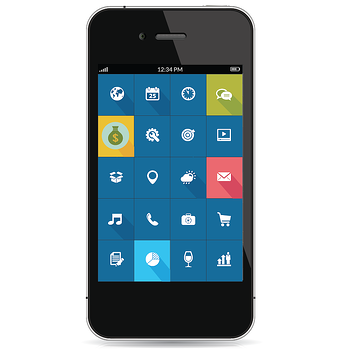Kids. They grow up so fast! These days, they've also grown up with the Internet, and with non-stop mobile computing as well. Analysts call this "wearable computing," the idea that a device like a smart phone is always on your person. The millennial crowd, in particular, is always "connected," always doing something seemingly important on their iPhone or Android. 
Is this a good thing for society at large? We'll leave that to the sociologists. What is irrefutable, however, is that small businesses can do a lot more to reach this highly coveted demographic. And rolling out a mobile banking app is one way to do it.
Understanding Millennials' Mobile Habits
- The data doesn't lie. A recent survey by SourceDigital13, which took a look at "a day in the life of the US adult mobile consumer," found, not surprisingly, people are on their devices 24-7. More to the point, the survey took a closer look at millennials' (young adults aged 25-34) mobile habits and found the following:
- Millennials spend disproportionately more time on sports, music and media, and "lifestyle and shopping" apps compared with older consumers. No surprise there.
- They spend less time, compared with older consumers, on gaming (surprisingly) and "utilities and productivity" apps. The latter category would include mobile banking, which we'll get to in a moment.
- When broken down by gender, both males and females equally use "utilities and productivity" apps less than their older counterparts.
So what's it all mean for banks looking to roll out a mobile banking app?
- Huge opportunity for small financial firms. Millennials are always on their mobile devices. They currently spend comparatively little time on things like a mobile banking app. The takeaway: there is a huge opportunity here for savvy small businesses to reach these customers.
- Minimal barriers to entry - Unlike, say, the gaming app category, businesses don't face daunting competition and millions of competitors. Furthermore, the people you wish to reach are already existing consumers.
- The service is an inherently necessary one - Though some people may disagree, banking, unlike "Angry Birds," is a necessity. Research shows that 92 percent of millennials use a bank, so the service you are providing — fast, convenient mobile banking — will always be of value.
OK, so now we see that small financial firms have a lot to gain by targeting the millennial demographic through mobile apps. But what are the ingredients of a properly aligned marketing message? Glad you asked. They include:
Embracing your buyer personas. The aforementioned study noted, for example, that female millennials use sports and health apps far more more than males. Take this data, throw in your "young professional female" buyer persona, and you have the foundation of your marketing message: a quick, easy mobile app for a woman on the go between work, shopping, and the gym.
Conversely, males spend more time on music and media apps. Whip out the classic persona of the 20-something in a fashionably fitted t-shirt, sauntering down the street with his ear buds in. Images are important: it's the quickest way for customers to identify with your brand.
- Unearthing purchasing patterns and running with them. What are your existing millennial customers' buying patterns? Do they mainly have checking accounts? Do some re-finance auto loans? In other words, target your marketing message based on what these demographic groups are most likely to do.
- Treating them like adults. Millennials don't like being patronized, so copy like "mobile banking is cool!" and "balance transfers are cray-cray!" won't fly. Treat millennials like adults. After all, according to the US Census Bureau, they are adults (apparently.)
- Emphasizing convenience and transparent fees. This article is a must-read. It's called "Millennials Desperate for a Better Banking Experience." (Full disclosure: it was written by a financial services marketing firm so it's not entirely objective.) That said, the takeaways can double as a millennial marketing to-do list. Specifically, millennials are looking for two main things from financial service providers: convenient products (like a mobile banking app!) and lower or more predictable fees.
- Differentiating yourselves from Wall Street. Many millennials came of age during the turbulent Occupy Wall Street era. They're leery of the big Wall Street banks. Give them a local, personalized, community-bank alternative.






